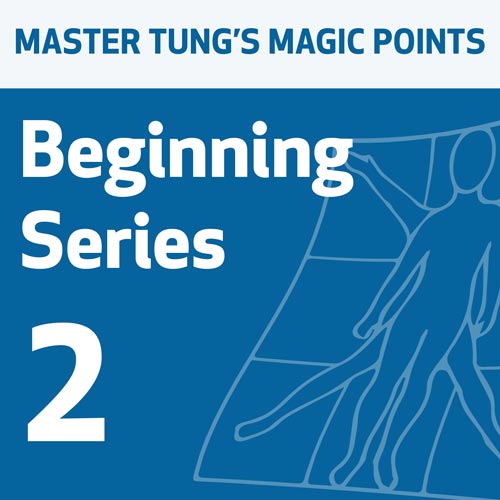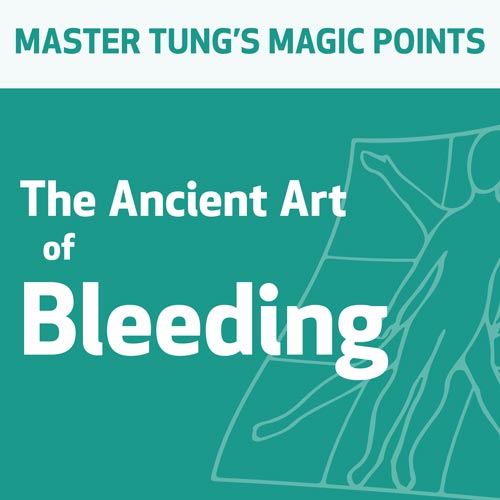Poison Points
Cupping the DT.01-DT.02 Toxin Areas:
Also known as the Poison Points, these are in an area on the lateral edge of the shoulder blades, where the liver stashes toxins that it cannot fully eliminate from the body. Cupping the Toxin Areas is very effective in clearing accumulated waste or poisons (environmental, pharmaceutical, etc.). I usually cup the Toxin Areas on every patient until their skin stops coloring; on a healthy person, this would be accomplished in two cupping sessions.
The first time a patient is cupped, their cup marks are usually much darker and the treatment is far more uncomfortable than in subsequent cupping sessions. Eighty percent of the toxins that have accumulated are usually removed during the first cupping treatment and also within the first minute, making this time the most painful. The second cupping treatment, done at least ten days later, should remove the residual 20% of toxins, which are usually found in the gaps between the previously applied cups. If this is the case, the third treatment, a few months later, verifies that toxins are not continuing to accumulate. If the area continues to color in the second cupping treatment much as it did in the first session, this is a sign that the toxin buildup is severe. Continue to cup until the color stops appearing.
If, by the fifth round of cupping, the cupped areas are still dark after cupping, this indicates that the patient is likely being exposed to toxins via their environment or is consuming too much animal protein. In my experience, when a patient removes all animal protein from their diet for a few weeks, the color becomes lighter and lighter. Once their skin has stopped coloring completely, animal protein may be reintroduced in significantly reduced amounts. In more than thirty years of practice, I have only seen dark cupping color reoccur three times. Patients should not need to have their Toxin Areas cupped frequently. All of the patients in my practice are kept clean with quarterly or at least bi-annual cupping. I rarely need to seven-star hammer.
Seven-Star Hammering:
A picture tells a thousand words, so before you consider seven-star hammering a patient, I highly recommend that you watch the segments on seven-star hammering and sterile waste disposal in my online bleeding class (Please see Additional Learning Tools).
When to Seven-Star Hammer:
Seven-star hammering followed by cupping of the Toxin Areas is a beautiful treatment, but it is rarely done. This technique is excruciatingly painful, but afterwards, people report enormous relief from severe itching – for example, from shingles, severe poison oak or poison ivy. These are the only reasons I would consider seven-star hammering the Toxin Areas.
Shingles or Herpes:
It is a horrific experience to have shingles. If a patient suffers a severe case, they will never have shingles again and do not need to be vaccinated against it. I am cautious in recommending any vaccine, as most of them contain aluminum, a known neurotoxin. When seven-star hammering for shingles, never hammer and cup an area with blisters, as this would spread the virus. For shingles outbreaks anywhere on the body, the Toxin Areas may be hammered and cupped, and also the local area may be seven-star hammered. Remember to wait until the scabs fall off to hammer the new, fresh, pink skin beneath, while it is still visible. Though local hammering is even more painful than hammering the Toxin Areas, it allows the toxins that are lodged in the nerve endings a way to escape, thus preventing postherpetic neuralgia, a gruesome aftermath of shingles.
The same treatment is also a fantastic way to end repetitive herpes outbreaks. Though the herpes virus is still likely to reside in the spinal cord, it will no longer live in the habituated distal areas. Remember, never hammer a herpes blister; wait for the scab to fall off, as you will then see pink skin indicating the proper location.
Whether this treatment is for shingles or herpes, there are places where cups cannot be applied (such as within the hairline or eyebrow). For these, simply seven-star hammer and then swipe with a sterile gauze pad. The patient should feel immediate relief with the first swipe. When hammering and swiping, always wear gloves and do not make skin contact with the “dirty” blood. Blood products must be disposed of properly; flush them down the toilet or place them in a doubled Sharps bag. Never seven-star hammer the genitals.
Note:
When students are learning about detoxification through cupping and seven-star hammering, they tend to get overexcited before they have personally experienced these treatments. I never use a treatment on another person unless I have experienced it. Be sensitive to your patient, as simply cupping the Toxin Area is highly effective 99.9% of the time. Even when you know toxins exist, seven-star hammering is excessive. Simple cupping is enough to handle toxicity from environmental sources, pharmaceuticals, food poisoning, or allergic responses, as well as conditions as common as eczema, psoriasis, and rashes. When, and only when, there is severe itching, I seven-star hammer and then cup the Toxin Area.
Additional Toxin Areas:
In the course of cupping thousands of patients and seeing interesting similarities, I have identified additional Toxin Areas that may be cupped. When the Toxin Areas on the outside of the scapula are cupped, this effectively gives the liver a larger storage area in which to deposit that which otherwise overwhelms it. Areas of pain or discomfort often harbor waste or toxins that the body is unable to eliminate on its own. Toxins also accumulate in places that are not particularly painful, but the skin colors darkly when cupped. I define these places as additional toxin areas, and I suspect that they overlap with the lymphatic system. So far, I have discovered three areas, in addition to DT.01-DT.02, that frequently color in this way. These areas are described below.
Note: To avoid injury in these sensitive areas, be sure to use a cup no larger than the #4 (1.3 cun).
Behind the Earlobes:
Directly behind the earlobes (as close as a cup can be placed without cupping the actual flesh of the earlobe) is another Toxin Area where almost every person’s skin turns black when it is cupped. This area is often very dark on the front half, which is why the cup needs to be directly behind the lobe to remove as much accumulated toxicity as possible – and therefore to get the skin to color as much as possible. It is very useful to cup here until color no longer appears, when treating any kind of Shao Yang neck pain, TMJ, headaches, ear infections, vertigo or tinnitus. Because the skin is dark after cupping on every person I have ever cupped for the first time, it is also part of my standard practice in long-term care.
As an aside, to definitively diagnose an ear infection, the practitioner may palpate directly behind the earlobe. When an infection is brewing, this area is very sore, as is the depression just in front of the opening to the ear. If it is sore upon palpation, cup behind the ear carefully and gently, always using a small cup. Do not cup if it is excruciating, as this indicates that the eardrum is ready to burst. Cupping will not burst the eardrum, but at this advanced stage of an ear infection, the procedure would be far too painful.
Where the Neck and Top of the Shoulders Come Together on the Sides:
When cupping a patient’s neck, it is necessary to shave or oil the fine hair on the back of the neck. I usually begin cupping on the back of the neck, as close to the occiput as I can get. Then, I proceed downward toward DU14 and continue around the sides of the neck to find another Toxin Area located where the neck and top of the shoulder come together. When #4 cups are placed on these toxin points, they stand at a 45-degree angle away from the body. This indicates that the placement is correct. Because these cups are half on the neck and half on the shoulder, toxins are being pulled from the base of the neck, where cervical and thoracic vertebrae unite, tension is held, and toxins accumulate. Frequently, the skin color from cupping this Shao Yang area is even darker than the color found on the Tai Yang where the neck joins the back. Because of the finer muscles, tendons and nerves in this area, please be sure to honor the recommendation to use a smaller sized cup, even on a larger neck.
Where the Sacrum and Coccyx Meet:
This Toxin Area would be likely to color on most people, but I do not routinely cup it, not only because it is inconvenient but also because the area is somewhat private. However, if I am cupping other points in the vicinity, I am sure to catch this one too, even if the patient is not complaining of coccyx pain. I always inform the patient before palpating or cupping a personal area such as this one. It is necessary to stretch the cheeks of the buttocks at the top of the crease in order to keep a small cup from popping off. If you see a tiny line of blood underneath this cup, there is yeast in the crease that may be treated topically with a cream, such as Monistat.
Strengthen Immunity:
Due to the Reaction Area of the Endocrine Glands, the Toxin Points assist in regulating the endocrine system. They are very effective in draining toxins located anywhere in the body, in part because of their proximity to the Small Intestine channel, which drains damp heat. When the skin continues to color from cupping, I frequently extend the Toxin Area and follow the color under the armpit; however, I usually don’t do this in the first cupping session, as the area tends to be painful when cupped, and the skin tends to color darkly. When people are very ill and their entire system is compromised, toxins also accumulate in the area of the rib cage just under the armpit, perhaps influencing or influenced by other pathways such as the Spleen, Heart, Liver and Gallbladder. When this entire area is cleaned through cupping, toxins are dumped into the bloodstream quickly, so the patient needs to rest and drink lots of water to assist in their removal. Be sure to instruct the patient to rest and eat well after a cupping treatment that yields dark skin color. Hardy patients can endure an all-in-one cupping treatment, while extremely fragile patients may prefer multiple cupping sessions to a very thorough one.
Within 48 hours, all patients should expect to feel far better than they did before the cupping. Immediately, however, they may be a little tired while their circulatory system eliminates the toxins that were pulled from structural tissues and deeper organs outward to the surface of the skin. Cupping the Toxin Areas strengthens the immune system, boosts circulation and frees all bodily processes of elimination. The liver loves to have the Toxin Areas cupped.
Breast Inflammation:
Please note that the lower Toxin Point also has the Reaction Area of the Breast, making the cupping of this area a good choice when female patients have premenstrual breast pain.
Cancer Treatment Detoxification:
Of course, I cup the Toxin Areas when detoxing a patient from chemotherapy or radiation (waiting until they have a break from those treatments), whether they are being treated for breast cancer or any other type.
Case History (Poison Oak):
For the first few weeks of this patient’s treatment, I really did not know what he looked like, because he came to me with the most severe case of poison oak I have ever seen. Someone had burned slash in his mountain neighborhood and inadvertently exposed everyone within distance of the smoke to systemic cases of poison oak, via inhalation. This poor man looked like a monster and could not see from either of his eyes. His sinus, nose and lips were so swollen that he could barely breathe through them. Because he had inhaled poison oak into his lungs, it had spread to his bloodstream and throughout his entire body. When he came to me for treatment, he had already received several cortisone injections and was taking prednisone. Because seven-star hammering and cupping of his Toxin Areas immediately and significantly relieved the itching that had him on the brink of suicide, he became my patient for life.
Case History (Shingles):
A woman in her mid-thirties came to me with a patch of shingles on the back of her neck. To immediately stop the burning and itching, I applied a combination of toxic topical herbs mixed with sesame oil to the lesion, and gave her some of the mixture to reapply at home. Weeks later, when the scabs had fallen off, I lightly seven-star hammered the area to complete the treatment. Interestingly, this episode of shingles was the first indication of a compromised immune system. A healthy thirty-year old is unlikely to contract shingles; usually, shingles only occurs in the elderly, weak or compromised. Twenty years later, I cupped her Toxin Areas and bled the site of the original shingles outbreak (1010.07 All Pivot) for nausea and vomiting from chemotherapy. Her treatment for breast cancer was effective and she returned to her life as a teacher and mother.
Other Courses By This Teacher

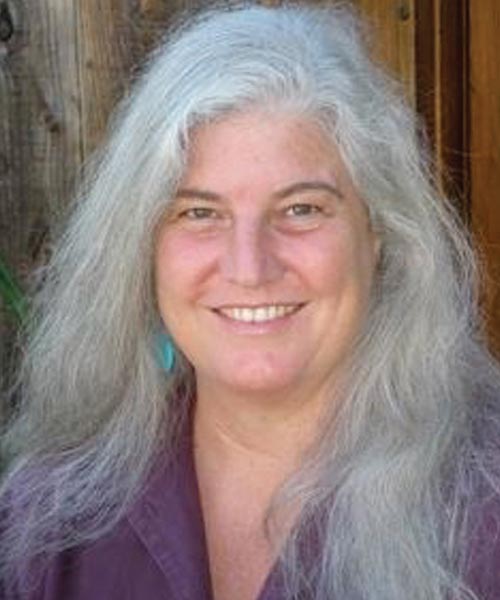
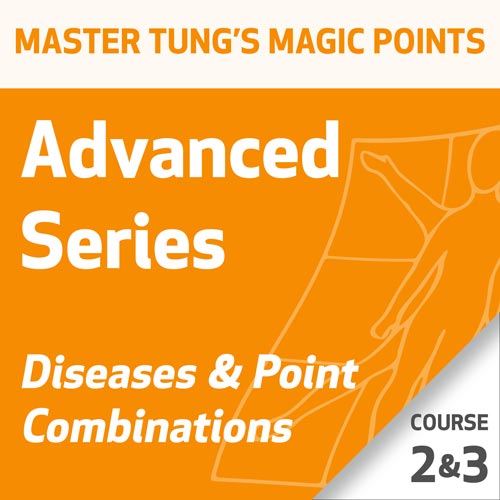

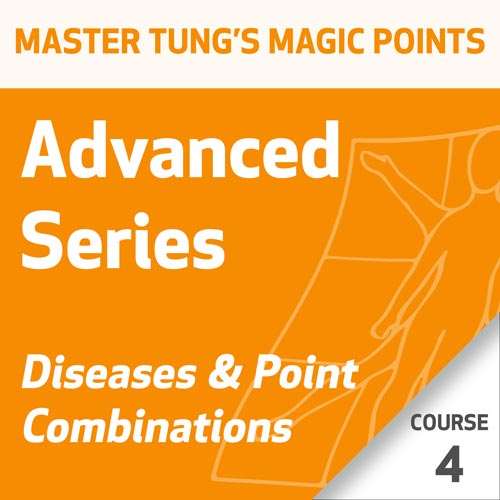

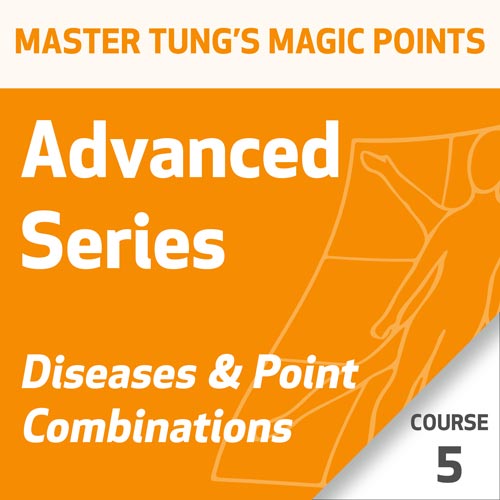

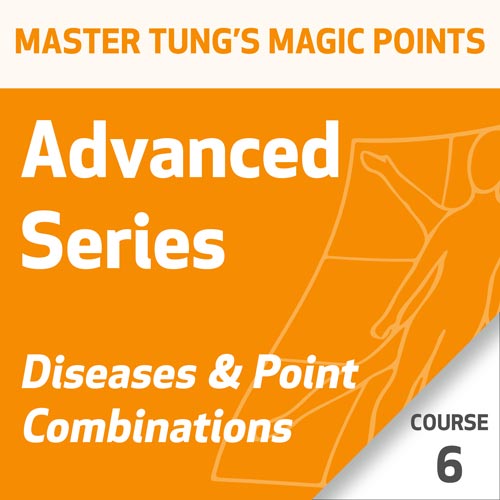

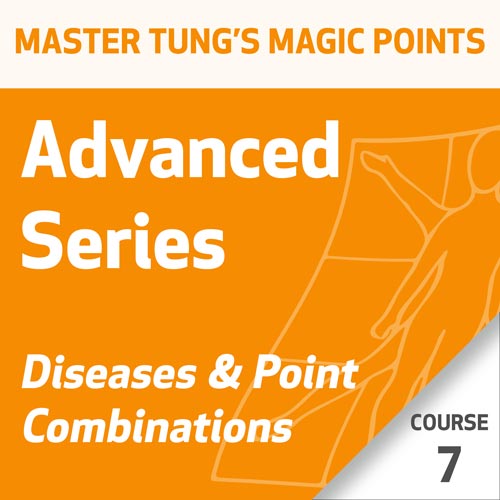



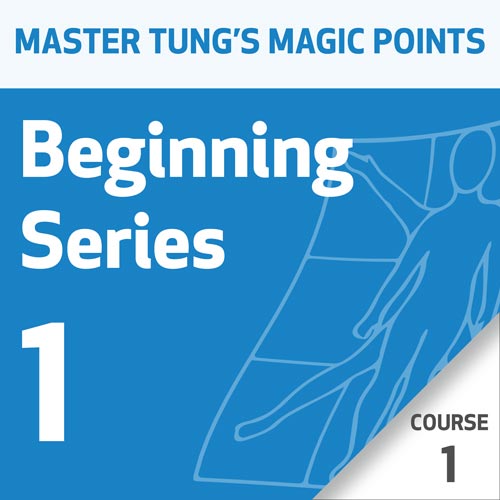

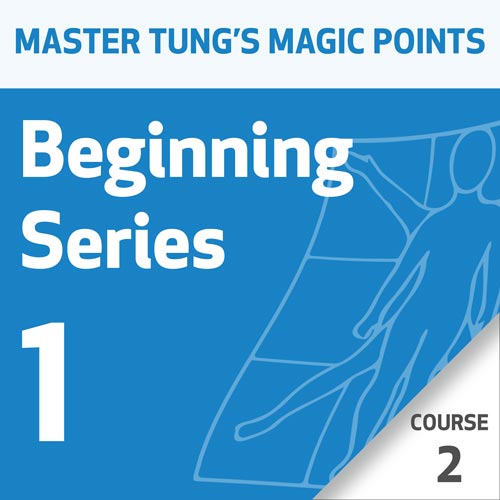

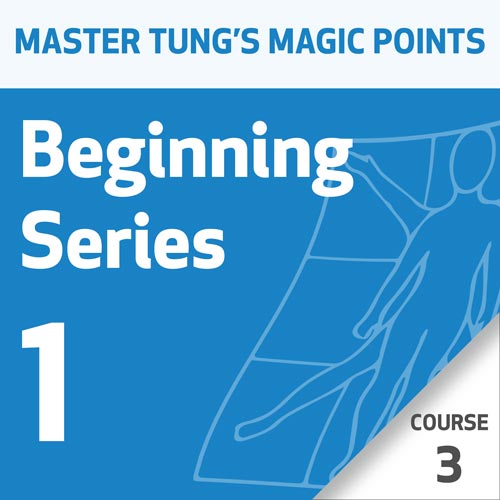

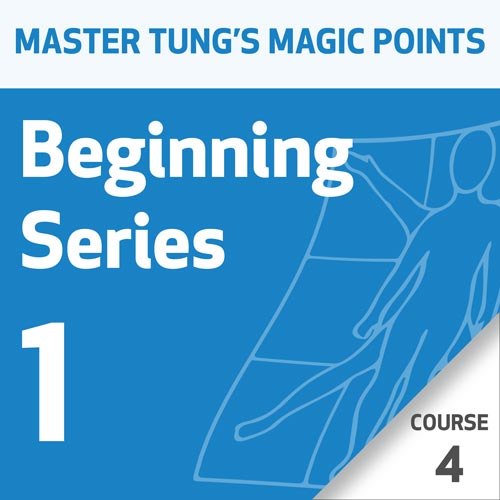

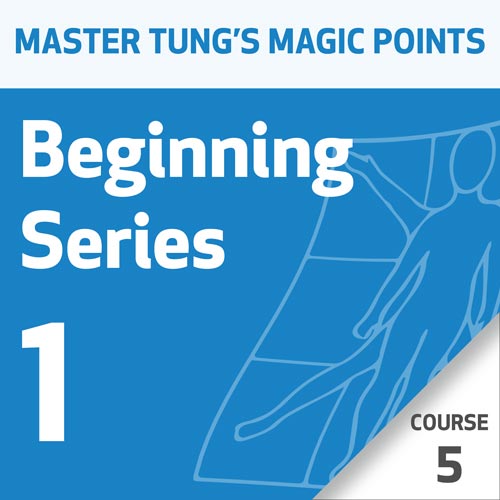

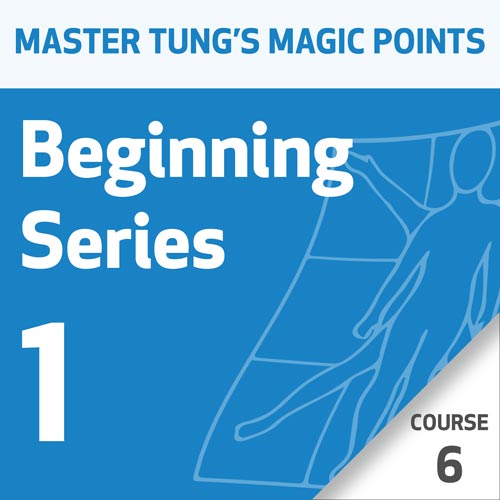

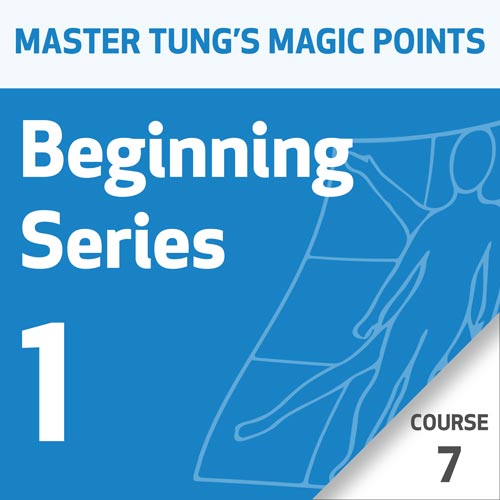

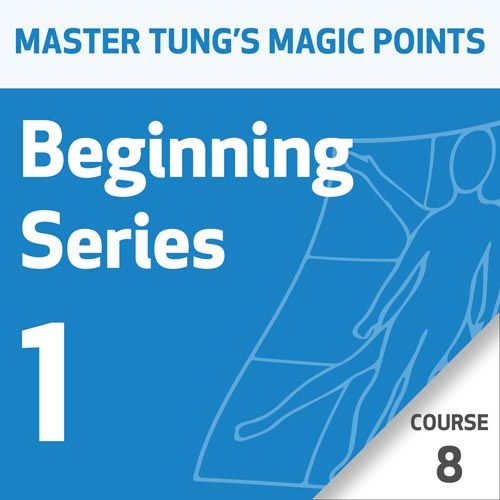



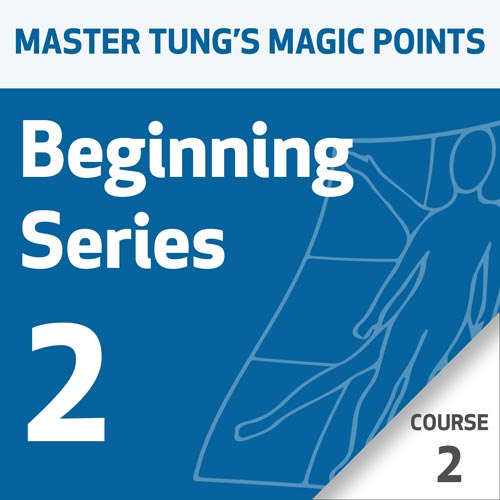

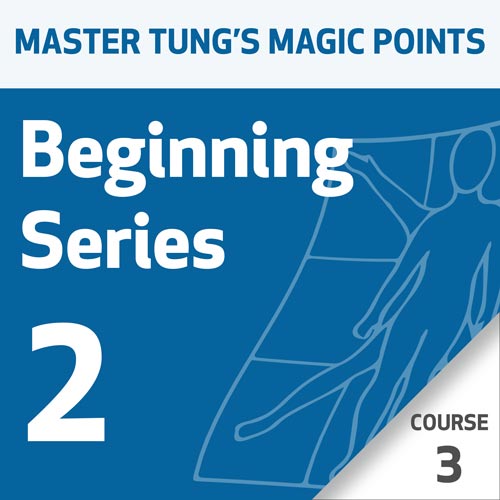

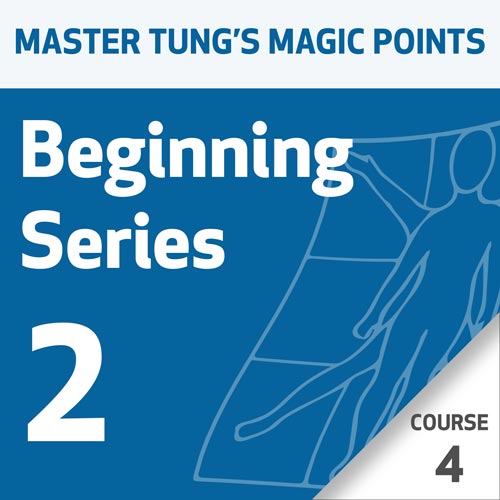

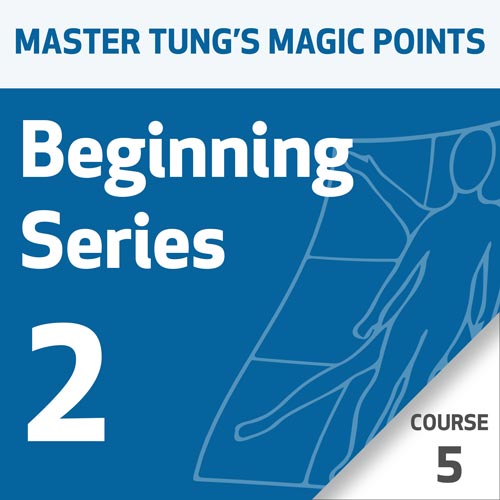

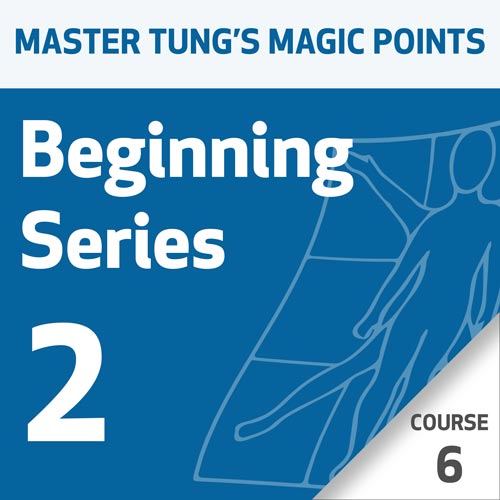

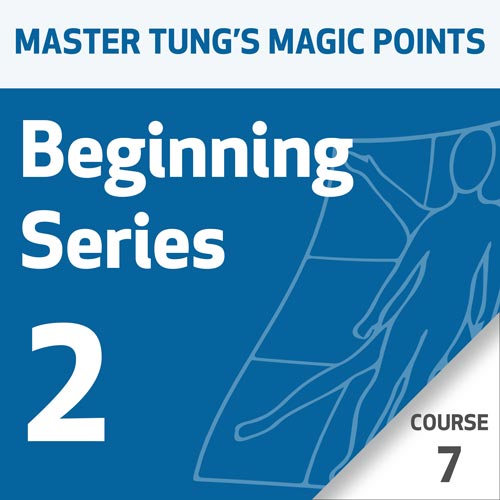

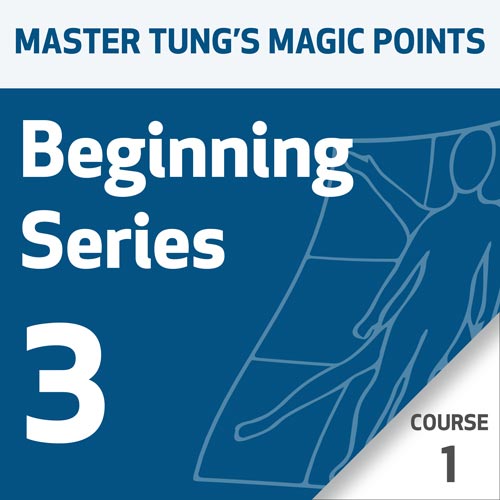

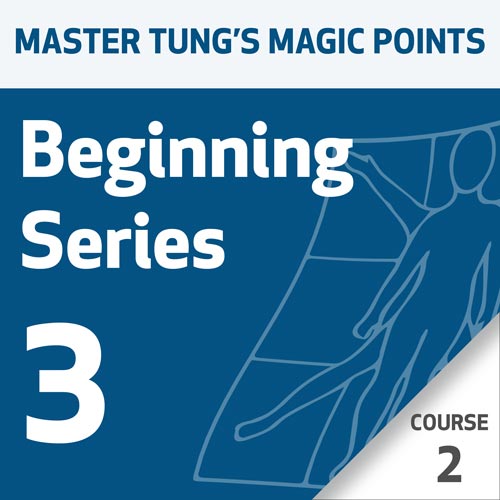

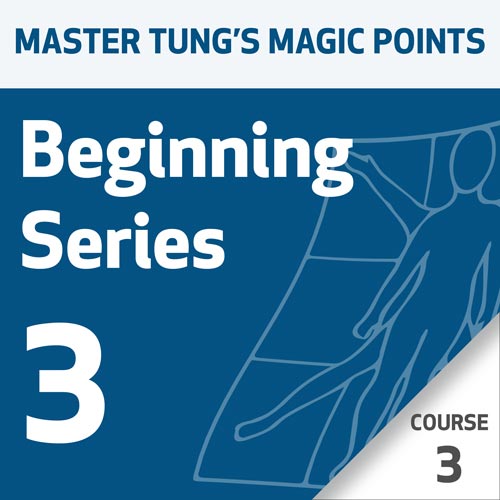

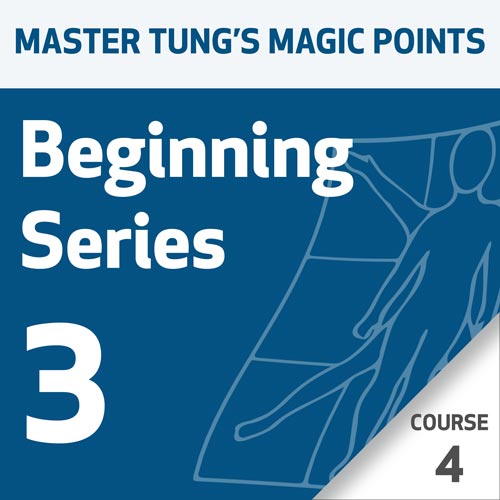

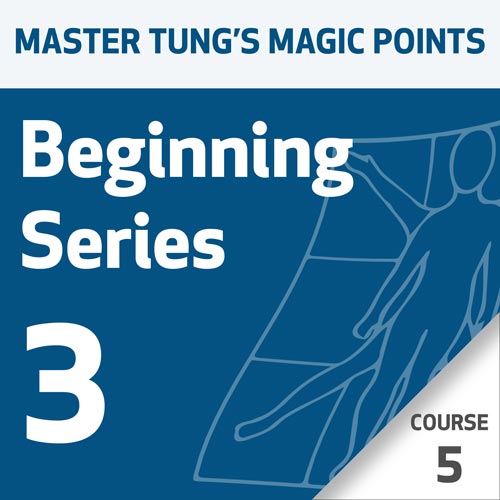

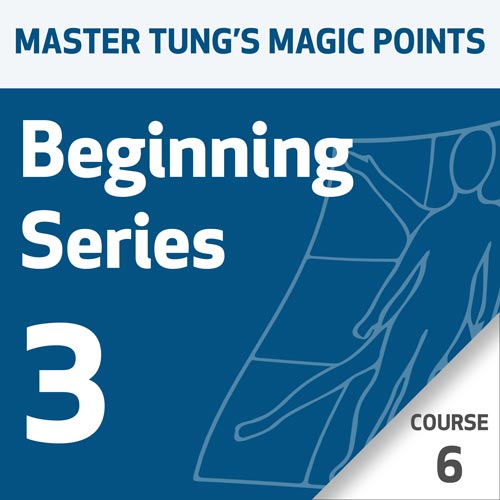

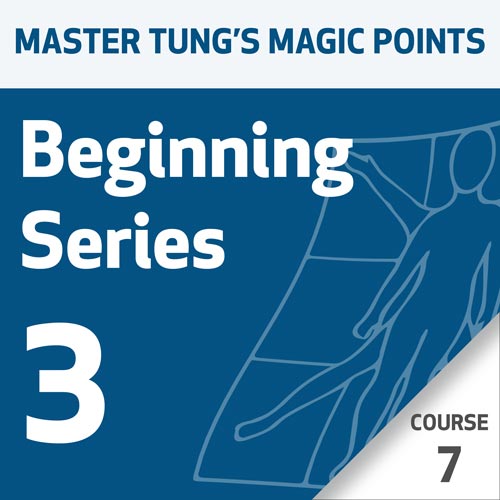

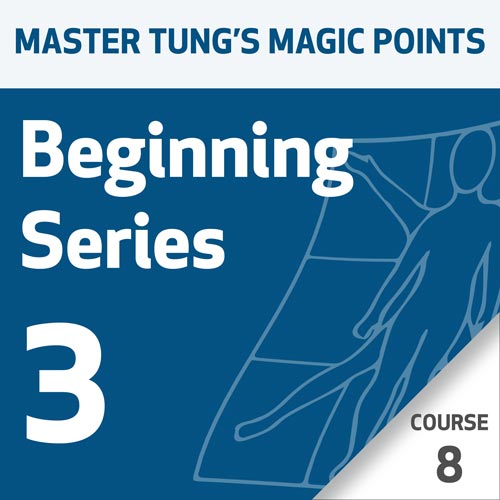

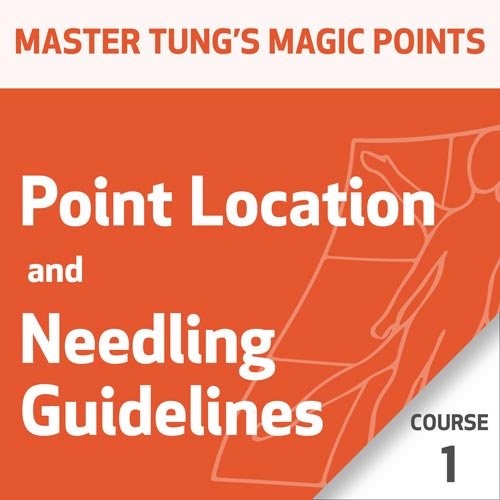



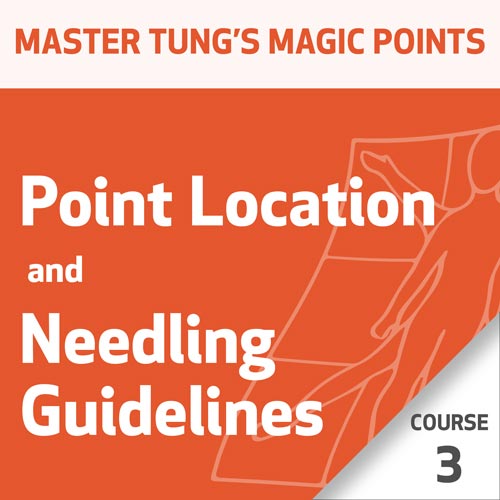

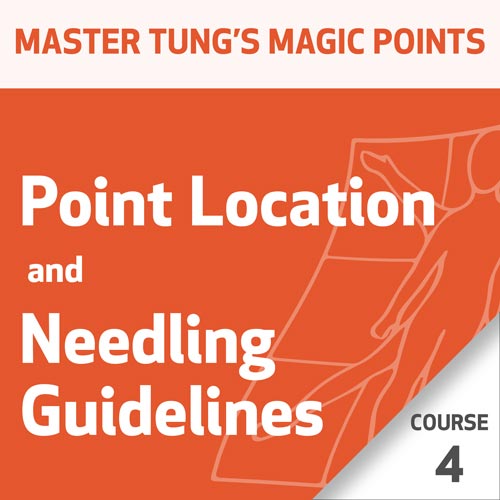

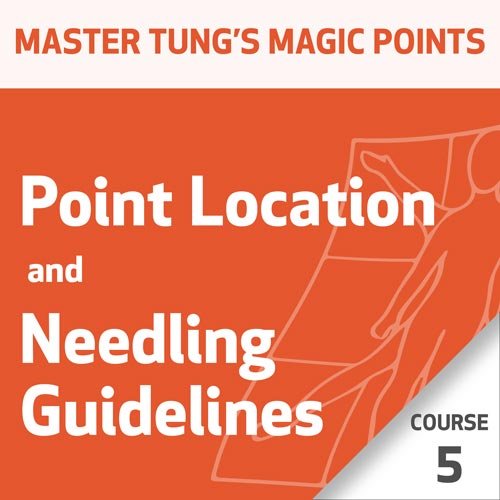



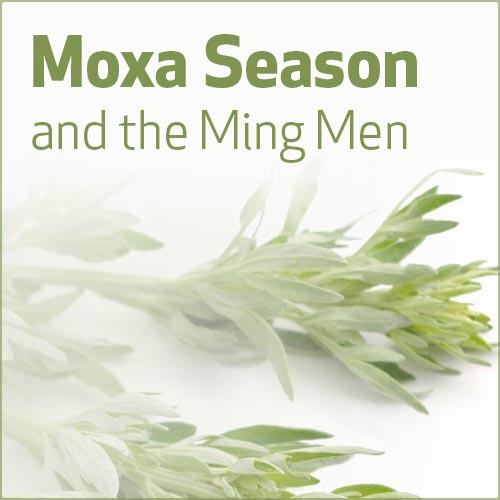



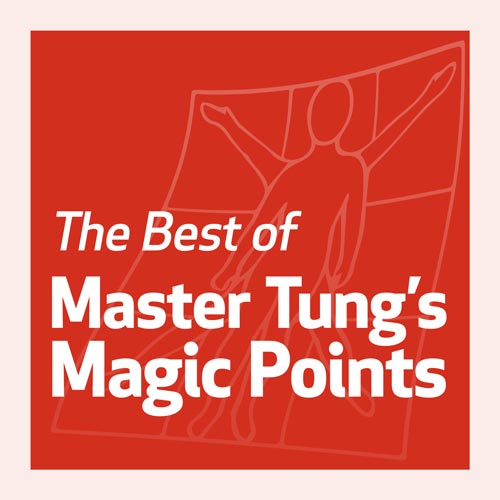

Master Tung's Magic Points: Advanced Series - Course 1
Diseases & Point Combinations, Part 1
with Susan Johnson
See In StoreOverview
In this advanced course, Susan Johnson discusses various clinical applications of Tung's Points. For those that are new to Tung's Points, you may want to take the Beginning Series beforehand, but it is not absolutely necessary, and not required. Please click the link below for a detailed outline of topics and applications covered in this course.
For a detailed table of contents, visit this link: https://bit.ly/3vYL48e
Learning Objectives
- Students will learn different ways to identify and treat headaches.
- To provide practitioners with a clear understanding of differential diagnosis and treatment protocols in relation to Tung's Points.
- Students will learn how to identify exact points to treat specific conditions.
- Students will learn various techniques on how to treat dizziness, aneurisms, hemorrhoids, and other conditions.
- To help students understand the energetic ways in which point patterns can be intelligently combined to enhance a treatment.
Your Teacher

Susan Johnson
A graduate of the ACTCM, Susan Johnson, L.Ac., has been practicing TCM for over 30 years. She studied extensively with Drs. Miriam Lee and Young Wei Chieh, and teaches Tung's Points internationally.
Category
Tags
Master Tung's Magic Points: Advanced Series - Course 2 & 3
Diseases & Point Combinations, Part 2 & 3
with Susan Johnson
See In StoreOverview
In this advanced course, Susan Johnson discusses various clinical applications of Tung's Points. For those that are new to Tung's Points, you may want to take the Beginning Series beforehand, but it is not absolutely necessary, and not required. Please click the link below for a detailed outline of topics and applications covered in this course.
Part 2: For a detailed table of contents, visit this link: https://bit.ly/3deUaXX
Part 3: For a detailed table of contents, visit this link: https://bit.ly/2T570Bh
Learning Objectives
- Students will learn how to identify exact points to treat specific conditions.
- To help students understand the energetic ways in which point patterns can be intelligently combined to enhance a treatment.
- Students will learn different ways to identify head, facial, and mouth conditions and treat them with specific points.
- To provide practitioners with a clear understanding of differential diagnosis and treatment protocols in relation to Tung's Points.
Your Teacher

Susan Johnson
A graduate of the ACTCM, Susan Johnson, L.Ac., has been practicing TCM for over 30 years. She studied extensively with Drs. Miriam Lee and Young Wei Chieh, and teaches Tung's Points internationally.
Category
Tags
Master Tung's Magic Points: Advanced Series - Course 4
Diseases & Point Combinations, Part 4
with Susan Johnson
See In StoreOverview
In this advanced course, Susan Johnson discusses various clinical applications of Tung's Points. For those that are new to Tung's Points, you may want to take the Beginning Series beforehand, but it is not absolutely necessary, and not required. Please click the link below for a detailed outline of topics and applications covered in this course.
For a detailed table of contents, visit this link: https://bit.ly/3ddibyu
Learning Objectives
- To help students understand the energetic ways in which point patterns can be intelligently combined to enhance a treatment.
- To provide practitioners with a clear understanding of differential diagnosis and treatment protocols in relation to Tung's Points.
- Students will learn how to identify exact points to treat specific conditions.
- Students will learn different ways to identify wrist, shoulder, arm, thigh, knee, ankle, foot, and hip pain and conditions, and learn how to treat these problems with specific points.
Your Teacher

Susan Johnson
A graduate of the ACTCM, Susan Johnson, L.Ac., has been practicing TCM for over 30 years. She studied extensively with Drs. Miriam Lee and Young Wei Chieh, and teaches Tung's Points internationally.
Category
Tags
Master Tung's Magic Points: Advanced Series - Course 5
Diseases & Point Combinations, Part 5
with Susan Johnson
See In StoreOverview
In this advanced course, Susan Johnson discusses various clinical applications of Tung's Points. For those that are new to Tung's Points, you may want to take the Beginning Series beforehand, but it is not absolutely necessary, and not required. Please click the link below for a detailed outline of topics and applications covered in this course.
For a detailed table of contents, visit this link: https://bit.ly/3qqMF5D
Learning Objectives
- To help students understand the energetic ways in which point patterns can be intelligently combined to enhance a treatment.
- Students will learn how to identify exact points to treat specific conditions.
- Students will learn advanced concepts about specific points such as further information about 88.01-.03 Heart Passing Points, 77.18 Kidney Gate, 11.17 Wood/Anger, 22.06-22.07 Zhong Bai/Xia Bai, 1010.18 Wood Branch, and many others.
- To provide practitioners with a clear understanding of differential diagnosis and treatment protocols in relation to Tung's Points.
- Students will learn different ways to identify and treat various diseases and conditions such as heart disease, chronic issues, rheumatoid arthritis, gallstones, and many others.
Your Teacher

Susan Johnson
A graduate of the ACTCM, Susan Johnson, L.Ac., has been practicing TCM for over 30 years. She studied extensively with Drs. Miriam Lee and Young Wei Chieh, and teaches Tung's Points internationally.
Category
Tags
Master Tung's Magic Points: Advanced Series - Course 6
Diseases & Point Combinations, Part 6
with Susan Johnson
See In StoreOverview
In this advanced course, Susan Johnson discusses various clinical applications of Tung's Points. For those that are new to Tung's Points, you may want to take the Beginning Series beforehand, but it is not absolutely necessary, and not required. Please click the link below for a detailed outline of topics and applications covered in this course.
For a detailed table of contents, visit this link: https://bit.ly/3xTpgwk
Learning Objectives
- To provide practitioners with a clear understanding of differential diagnosis and treatment protocols in relation to Tung's Points.
- Students will learn advanced concepts about specific points such as further information about SP4 and PC6 for Crohn’s disease, GB31 and A.01, 88.17-88.19 Four Horses, and the Stomach channel or Four Flower line.
- Students will learn different ways to identify and treat various diseases and conditions such as spleen, stomach, kidney, urinary diseases/conditions, ulcer pain, acid reflux, prostate and bladder infections, and many others.
- Students will learn how to identify exact points to treat specific conditions.
- To help students understand the energetic ways in which point patterns can be intelligently combined to enhance a treatment.
Your Teacher

Susan Johnson
A graduate of the ACTCM, Susan Johnson, L.Ac., has been practicing TCM for over 30 years. She studied extensively with Drs. Miriam Lee and Young Wei Chieh, and teaches Tung's Points internationally.
Category
Tags
Master Tung's Magic Points: Advanced Series - Course 7
Diseases & Point Combinations, Part 7
with Susan Johnson
See In StoreOverview
In this advanced course, Susan Johnson discusses various clinical applications of Tung's Points. For those that are new to Tung's Points, you may want to take the Beginning Series beforehand, but it is not absolutely necessary, and not required. Please click the link below for a detailed outline of topics and applications covered in this course.
For a detailed table of contents, visit this link: https://bit.ly/3jeqaPF
Learning Objectives
- Students will learn how to identify exact points to treat specific conditions.
- Students will learn advanced concepts about specific points such as further information about 77.11-77.12 Four Flower Lower and Bowel Intestine, and 11.06 Return to the Nest, etc.
- Students will learn different ways to identify and treat various diseases and conditions such as intestinal diseases/bleeding, hemorrhoids, appendicitis, herpes, impotence, and many more.
- To provide practitioners with a clear understanding of differential diagnosis and treatment protocols in relation to Tung's Points.
- To help students understand the energetic ways in which point patterns can be intelligently combined to enhance a treatment.
Your Teacher

Susan Johnson
A graduate of the ACTCM, Susan Johnson, L.Ac., has been practicing TCM for over 30 years. She studied extensively with Drs. Miriam Lee and Young Wei Chieh, and teaches Tung's Points internationally.
Category
Tags
Master Tung's Magic Points: Advanced Series - Course 8
Diseases & Point Combinations, Part 8
with Susan Johnson
See In StoreOverview
In this advanced course, Susan Johnson discusses various clinical applications of Tung's Points. For those that are new to Tung's Points, you may want to take the Beginning Series beforehand, but it is not absolutely necessary, and not required. Please click the link below for a detailed outline of topics and applications covered in this course.
For a detailed table of contents, visit this link: https://bit.ly/3dbcOQu
Learning Objectives
- To help students understand the energetic ways in which point patterns can be intelligently combined to enhance a treatment.
- To provide practitioners with a clear understanding of differential diagnosis and treatment protocols in relation to Tung's Points.
- Students will learn how to identify exact points to treat specific conditions.
- Students will learn advanced concepts about specific points such as further information about 22.03 Upper White (Shang Bai), 77.01-77.02, and Miriam's Ten Needles.
- Students will learn different ways to identify and treat various diseases and conditions such as Multiple Sclerosis, high cholesterol, diabetes, epilepsy, blood diseases, teeth grinding, and many more.
Your Teacher

Susan Johnson
A graduate of the ACTCM, Susan Johnson, L.Ac., has been practicing TCM for over 30 years. She studied extensively with Drs. Miriam Lee and Young Wei Chieh, and teaches Tung's Points internationally.
Category
Tags
Master Tung's Magic Points: Beginning Series 1 - Course 1
Introduction & Magic Square
with Susan Johnson
See In StoreOverview
In this part, Susan gives an introduction to Master Tung’s points, and teaches the principles of the Magic Square. Some discussion topics include: how to best learn the points, a history of Tung’s acupuncture, and available resources.
For a detailed table of contents, visit this link: https://bit.ly/3xQAHVt
Learning Objectives
- To offer a detailed description of points from Tung's system of points.
- To give a brief history of Tung's Points in the US.
- To explain the use of the Nine Stars of the Magic Square and how we can use it to help with the selection of points within Tung's Acupuncture system for structural issues and pain.
- To offer how to learn this material, and give an overview of what will be covered and learned in the series.
Your Teacher

Susan Johnson
A graduate of the ACTCM, Susan Johnson, L.Ac., has been practicing TCM for over 30 years. She studied extensively with Drs. Miriam Lee and Young Wei Chieh, and teaches Tung's Points internationally.
Category
Tags
Master Tung's Magic Points: Beginning Series 1 - Course 2
How the Points Work
with Susan Johnson
See In StoreOverview
In this part, Susan gives her lecture on How the Points Work. Some discussion topics include: cupping to clear toxins, the Five Theories used in Master Tung’s acupuncture, and deep needling versus shallow needling.
NOTE: This course mentions bleeding methods and the treatment of cancer as part of the historical discussion of Tung’s acupuncture points. Bloodletting and Cancer treatment are not within the scope of practice for California Acupuncture Licensees. Furthermore, bloodletting and/or the treatment of cancer may or may not be included in your scope of practice in your particular jurisdiction. The mention of the historical use of these techniques does not certify the learner to use these points or condone the use of these techniques outside the scope of one’s practice in their jurisdiction.
For a detailed table of contents, visit this link: https://bit.ly/2Utnzak
Learning Objectives
- To explain the use of the Nine Stars of the Magic Square and how we can use it to help with the selection of points within Tung's Acupuncture system for structural issues and pain.
- To offer how to learn this material, and give an overview of what will be covered and learned in the series.
- To give a brief history of Tung's Points in the US.
- To offer a detailed description of points from Tung's system of points, and learn more about the system in the 'how the points work' lecture, which will provide an overview of the 5 operative theories involved in the proper use of Tung's Points.
Your Teacher

Susan Johnson
A graduate of the ACTCM, Susan Johnson, L.Ac., has been practicing TCM for over 30 years. She studied extensively with Drs. Miriam Lee and Young Wei Chieh, and teaches Tung's Points internationally.
Category
Tags
Master Tung's Magic Points: Beginning Series 1 - Course 3
Points 11.01-11.06
with Susan Johnson
See In StoreOverview
In this part, points 11.01 through 11.06 are covered (including 11.17 and 11.24). Some discussion topics include: an introduction to locating finger points, and finger needling methods.
For a detailed table of contents, visit this link: https://bit.ly/2SoINFE
Learning Objectives
- Students will learn how to prioritize treatments, and what specific treatment actions should be used when.
- To offer a detailed description of points from Tung's system of points
- Students will also learn treatment points for a hernia and gynecological issues.
- Students will learn how to identify exact points on the hand, fingers, arms, legs and feet, and how they can be used to treat specific conditions.
Your Teacher

Susan Johnson
A graduate of the ACTCM, Susan Johnson, L.Ac., has been practicing TCM for over 30 years. She studied extensively with Drs. Miriam Lee and Young Wei Chieh, and teaches Tung's Points internationally.
Category
Tags
Master Tung's Magic Points: Beginning Series 1 - Course 4
Points 11.07-11.15
with Susan Johnson
See In StoreOverview
In this part, points 11.07 through 11.15 are covered. Some discussion topics include: treating stroke, moxa season, bamboo cupping the spine, and cupping the musculature.
For a detailed table of contents, visit this link: https://bit.ly/2SrgAOF
Learning Objectives
- To encourage further study of this remarkable body of work.
- To offer a detailed description of points from Tung's system of points.
- Students will learn how to identify exact points on the hand, fingers, arms, legs and feet, and how they can be used to treat specific conditions.
- Students will also learn various ways to use moxa.
- Students will learn how to treat varicose veins and spine pain among other conditions.
Your Teacher

Susan Johnson
A graduate of the ACTCM, Susan Johnson, L.Ac., has been practicing TCM for over 30 years. She studied extensively with Drs. Miriam Lee and Young Wei Chieh, and teaches Tung's Points internationally.
Category
Tags
Master Tung's Magic Points: Beginning Series 1 - Course 5
Points 11.16-11.27
with Susan Johnson
See In StoreOverview
In this part, points 11.16 through 11.27 (excluding 11.17 and 11.24) are covered. Some discussion topics include: active qi moving technique, cupping, Reaction Areas.
For a detailed table of contents, visit this link: https://bit.ly/3xUl4MW
Learning Objectives
- Students will also learn how to treat hepatitis using specific points, and also treatment of other conditions.
- Students will also learn about needle size and gauge for finger points.
- To offer a detailed description of points from Tung's system of points.
- Students will learn how to identify exact points on the hand, fingers, arms, legs and feet, and how they can be used to treat specific conditions.
- To encourage further study of this remarkable body of work.
Your Teacher

Susan Johnson
A graduate of the ACTCM, Susan Johnson, L.Ac., has been practicing TCM for over 30 years. She studied extensively with Drs. Miriam Lee and Young Wei Chieh, and teaches Tung's Points internationally.
Category
Tags
Master Tung's Magic Points: Beginning Series 1 - Course 6
Points 22.01-22.07
with Susan Johnson
See In StoreOverview
In this part, points 22.01 through 22.07 are covered (including A.05 and A.06). Some discussion topics include: diagnosing uterine fibroids, Zero Balancing and polarity lines with magnets, frequent ankle sprains and hip disease, choices in the treatment of sciatica.
For a detailed table of contents, visit this link: https://bit.ly/3h6afjL
Learning Objectives
- Students will also learn about zero balancing and the use of magnets.
- To offer a detailed description of points from Tung's system of points.
- To encourage further study of this remarkable body of work.
- Students will learn how to identify exact points on the hand, fingers, arms, legs, and feet and how they can be used to treat specific conditions.
- Students will also learn what treatments are forbidden in pregnancy, treatments for frequent ankle sprains and disease, and many more.
Your Teacher

Susan Johnson
A graduate of the ACTCM, Susan Johnson, L.Ac., has been practicing TCM for over 30 years. She studied extensively with Drs. Miriam Lee and Young Wei Chieh, and teaches Tung's Points internationally.
Category
Tags
Master Tung's Magic Points: Beginning Series 1 - Course 7
Points 22.08-22.11
with Susan Johnson
See In StoreOverview
In this part, points 22.08 through 22.11 are covered (including Miriam Lee’s Ten Needles, Tonification and Sedation, and A.04 San Cha III). Some discussion topics include:, Miriam’s Tune-up, sciatica treatment, and Dr. Young’s bone spur treatment.
For a detailed table of contents, visit this link: https://bit.ly/35Qes5Z
Learning Objectives
- To offer a detailed description of points from Tung's system of points.
- To encourage further study of this remarkable body of work.
- Students will learn from a lecture on 'The Transporting Points,' followed by a description of Dr. Miriam Lee's famous 10 Needles.
- Students will also learn about Jing-Well, Ying-Spring, Shu-Stream, and many more points.
- Students will learn how to identify exact points on the hand, fingers, arms, legs and feet, and how they can be used to treat specific conditions.
Your Teacher

Susan Johnson
A graduate of the ACTCM, Susan Johnson, L.Ac., has been practicing TCM for over 30 years. She studied extensively with Drs. Miriam Lee and Young Wei Chieh, and teaches Tung's Points internationally.
Category
Tags
Master Tung's Magic Points: Beginning Series 1 - Course 8
Points 33.01-33.11
with Susan Johnson
See In StoreOverview
In this part, points 33.01 through 33.11 are covered. Some discussion topics include: moxa season, how to prevent a wind chill from going deeper, treating herpes and shingles (including herpes in the eye).
For a detailed table of contents, visit this link: https://bit.ly/3ddWm22
Learning Objectives
- Students will also learn about moxa and moxa oil to treat urinary incontinence, as well as treatments for other conditions.
- To encourage further study of this remarkable body of work.
- To offer a detailed description of points from Tung's system of points.
- Students will learn how to identify exact points on the hand, fingers, arms, legs and feet, and how they can be used to treat specific conditions.
- Students will also learn about certain points patients can hold to alleviate certain symptoms for certain conditions.
Your Teacher

Susan Johnson
A graduate of the ACTCM, Susan Johnson, L.Ac., has been practicing TCM for over 30 years. She studied extensively with Drs. Miriam Lee and Young Wei Chieh, and teaches Tung's Points internationally.
Category
Tags
Master Tung's Magic Points: Beginning Series 2 - Course 1
Points 33.12-44.17
with Susan Johnson
See In StoreOverview
In this part, points 33.12 through 44.17 are covered. Some discussion topics include: guiding points, positioning for needling, and needle gauges, Heaven – Earth – Man in that order, treating knee pain and frozen shoulder, info on LU5.
For a detailed table of contents, visit this link: https://bit.ly/3jbkvtI
Learning Objectives
- To offer a detailed description of the points and point patterns from Tung's system of points, starting with those found on the feet and legs, and how they can be used to treat specific conditions.
- Students will also learn various ways to use guiding points, position the patient, and much more.
- To continue the study of Tung's Points system.
- To encourage the further study of this remarkable body of work.
- To make sure students are taking in the information offered in a way that will allow for the immediate use of the points described.
Your Teacher

Susan Johnson
A graduate of the ACTCM, Susan Johnson, L.Ac., has been practicing TCM for over 30 years. She studied extensively with Drs. Miriam Lee and Young Wei Chieh, and teaches Tung's Points internationally.
Category
Tags
Master Tung's Magic Points: Beginning Series 2 - Course 2
Points 55.01-55.02
with Susan Johnson
See In StoreOverview
In this part, points 55.01 and 55.02 are covered. Some discussion topics include: how to combine points, heart disease: excess, deficiency and emergency, treating interstitial cystitis, pemphigoid, and all eye diseases.
For a detailed table of contents, visit this link: https://bit.ly/3h3MHw6
Learning Objectives
- To encourage the further study of this remarkable body of work.
- To offer a detailed description of the points and point patterns from Tung's system of points, starting with those found on the feet and legs, and how they can be used to treat specific conditions.
- To make sure students are taking in the information offered in a way that will allow for the immediate use of the points described.
- To continue the study of Tung's Points system.
- Students will also learn various treatments in regards to treating wet glaucoma, macular degeneration, and much more.
Your Teacher

Susan Johnson
A graduate of the ACTCM, Susan Johnson, L.Ac., has been practicing TCM for over 30 years. She studied extensively with Drs. Miriam Lee and Young Wei Chieh, and teaches Tung's Points internationally.
Category
Tags
Master Tung's Magic Points: Beginning Series 2 - Course 3
Points 55.03-66.05
with Susan Johnson
See In StoreOverview
In this part, points 55.03 through 66.05 are covered (including Ren12 and PC6). Some discussion topics include: cupping the sacrum, treating brain tumor, thumb pain, vaginal pain, stomach ulcer, deep needling on CV12 and cupping the jaw.
For a detailed table of contents, visit this link: https://bit.ly/3wZXVbQ
Learning Objectives
- To offer a detailed description of the points and point patterns from Tung's system of points, starting with those found on the feet and legs, and how they can be used to treat specific conditions.
- To continue the study of Tung's Points system.
- Students will also learn about 55.03 Flower Bone Two; 55.04-55.05 Flower Bone Three and Four, and much more.
- To encourage the further study of this remarkable body of work.
- To make sure students are taking in the information offered in a way that will allow for the immediate use of the points described.
Your Teacher

Susan Johnson
A graduate of the ACTCM, Susan Johnson, L.Ac., has been practicing TCM for over 30 years. She studied extensively with Drs. Miriam Lee and Young Wei Chieh, and teaches Tung's Points internationally.
Category
Tags
Master Tung's Magic Points: Beginning Series 2 - Course 4
Points 66.06-66.11
with Susan Johnson
See In StoreOverview
In this part, points 66.06 through 66.11 are covered (including continued dialog on 66.05). Some discussion topics include: pediatric treatment, bone spurs and stenosis, keeping your treatments simple, more on St 43 Golden Gate, trigeminal neuralgia, Scheffler root, avalanche uterine info, curving the needle on SP4, and floaters.
For a detailed table of contents, visit this link: https://bit.ly/3deVGJD
Learning Objectives
- To continue the study of Tung's Points system.
- To make sure students are taking in the information offered in a way that will allow for the immediate use of the points described.
- Students will also learn various ways to help patients express themselves safely, how to keep treatments simple, and so much more.
- To offer a detailed description of the points and point patterns from Tung's system of points, starting with those found on the feet and legs, and how they can be used to treat specific conditions.
- To encourage the further study of this remarkable body of work.
Your Teacher

Susan Johnson
A graduate of the ACTCM, Susan Johnson, L.Ac., has been practicing TCM for over 30 years. She studied extensively with Drs. Miriam Lee and Young Wei Chieh, and teaches Tung's Points internationally.
Category
Tags
Master Tung's Magic Points: Beginning Series 2 - Course 5
Points 66.12-66.14
with Susan Johnson
See In StoreOverview
In this part, points 66.12 through 66.14 are covered (including additional, important commentary on 66.11). Some discussion topics include: paralytic colon after anesthesia, cholesterol, drooling caused by brain injury, thyroid treatment, Hakomi, head noise, pre-eclampsia and pregnancy treatment, taking statin drugs.
For a detailed table of contents, visit this link: https://bit.ly/3wUJZQ8
Learning Objectives
- Students will also learn about thyroid treatments, and also various pregnancy treatments using Miriam's Ten Needles, and much more.
- To offer a detailed description of the points and point patterns from Tung's system of points, starting with those found on the feet and legs, and how they can be used to treat specific conditions.
- To encourage the further study of this remarkable body of work.
- To continue the study of Tung's Points system.
- To make sure students are taking in the information offered in a way that will allow for the immediate use of the points described.
Your Teacher

Susan Johnson
A graduate of the ACTCM, Susan Johnson, L.Ac., has been practicing TCM for over 30 years. She studied extensively with Drs. Miriam Lee and Young Wei Chieh, and teaches Tung's Points internationally.
Category
Tags
Master Tung's Magic Points: Beginning Series 2 - Course 6
Points 77.01-77.07
with Susan Johnson
See In StoreOverview
In this part, points 77.01 through 77.07 are covered. Some discussion topics include: plantar fasciitis, positioning the patient for neck cupping, treating severe neck injuries, arterial occlusion in the neck, UB40 for hemorrhoids, amazing versatility of 77.05-77.07 Three Weights for brain, facial paralysis, trigeminal neuralgia and hip pain.
For a detailed table of contents, visit this link: https://bit.ly/3h6jrow
Learning Objectives
- To make sure students are taking in the information offered in a way that will allow for the immediate use of the points described.
- To continue the study of Tung's Points system.
- To offer a detailed description of the points and point patterns from Tung's system of points, starting with those found on the feet and legs, and how they can be used to treat specific conditions.
- Students will also learn about Three Weights for various diseases, and get an introduction to cupping, and much more.
- To encourage the further study of this remarkable body of work.
Your Teacher

Susan Johnson
A graduate of the ACTCM, Susan Johnson, L.Ac., has been practicing TCM for over 30 years. She studied extensively with Drs. Miriam Lee and Young Wei Chieh, and teaches Tung's Points internationally.
Category
Tags
Master Tung's Magic Points: Beginning Series 2 - Course 7
Points 77.08-77.16
with Susan Johnson
See In StoreOverview
In this part, points 77.08 through 77.16 are covered. Some discussion topics include: Using the Four Flower Line (stomach channel) for treatment of frontal headache, real angina, glaucoma with Crohn’s Disease, 77.15-77.16 Two Lips for herpes and treating herpes in the eye.
For a detailed table of contents, visit this link: https://bit.ly/3hkH6BR
Learning Objectives
- To continue the study of Tung's Points system.
- To encourage the further study of this remarkable body of work.
- To offer a detailed description of the points and point patterns from Tung's system of points, starting with those found on the feet and legs, and how they can be used to treat specific conditions.
- Students will also learn about locating various Four Flower points and treatments they can help with, 77.15-77.16 Two Lips, and much more.
- To make sure students are taking in the information offered in a way that will allow for the immediate use of the points described.
Your Teacher

Susan Johnson
A graduate of the ACTCM, Susan Johnson, L.Ac., has been practicing TCM for over 30 years. She studied extensively with Drs. Miriam Lee and Young Wei Chieh, and teaches Tung's Points internationally.
Category
Tags
Master Tung's Magic Points: Beginning Series 3 - Course 1
Points 77.17-77.25
with Susan Johnson
See In StoreOverview
In this part, points 77.17 through 77.25 are covered. Some discussion topics include: the importance of supervision and point selection, treatment plans, “when Master Tung’s points don’t work,” and how to rebuild Qi with moxa, tonification after using wind herbs, cervical dystonia, torticollis, hypertension, hypotension, treatment after stroke, shoulder pain and gestational hyperthyroid and the Gallbladder is the Sea of Marrow.
NOTE: This course mentions bleeding techniques and the treatment of cancer as part of the historical discussion of Tung’s acupuncture points. Bloodletting and Cancer treatment are not within the scope of practice for California Acupuncture Licensees. Furthermore, bloodletting nd/or the treatment of cancer may or may not be included in your scope of practice in your particular jurisdiction. The mention of the historical use of these techniques does not certify the learner to use these points or condone the use of these techniques outside the scope of one’s practice in their jurisdiction.
For a detailed table of contents, visit this link: https://bit.ly/3qpTg05
Learning Objectives
- To encourage the further study of this remarkable body of work.
- To continue the study of Tung's Points system.
- To make sure students are taking in the information offered in a way that will allow for the immediate use of the points described.
- To offer a detailed and in-depth description of points and point patterns from Tung's system of points, starting with those found on the thighs.
- Students will also learn about ankle pain's relationship to hip issues, 77.18-77.21 Three Emperors, 77.22-77.23 Beside Three Miles Upper/Lower, and much more.
Your Teacher

Susan Johnson
A graduate of the ACTCM, Susan Johnson, L.Ac., has been practicing TCM for over 30 years. She studied extensively with Drs. Miriam Lee and Young Wei Chieh, and teaches Tung's Points internationally.
Category
Tags
Master Tung's Magic Points: Beginning Series 3 - Course 2
Points 77.26-88.06
with Susan Johnson
See In StoreOverview
In this part, points 77.26 through 88.06 are covered (including Three Plum Blossom). Some discussion topics include: benign and malignant tumors, supporting chemotherapy and radiation, rheumatoid arthritis, use fewer points when treating weak, elderly or pregnant patients, habitual miscarriage and stabilizing pregnancy, and the treatment of all types of female reproductive concerns.
NOTE: This course mentions bleeding techniques and the treatment of cancer as part of the historical discussion of Tung’s acupuncture points. Bloodletting and Cancer treatment are not within the scope of practice for California Acupuncture Licensees. Furthermore, bloodletting nd/or the treatment of cancer may or may not be included in your scope of practice in your particular jurisdiction. The mention of the historical use of these techniques does not certify the learner to use these points or condone the use of these techniques outside the scope of one’s practice in their jurisdiction.
For a detailed table of contents, visit this link: https://bit.ly/3wYIG2F
Learning Objectives
- Students will also learn about treating lymphoma, stabilizing pregnancy, 88.04-88.06 Three Sisters for treating various conditions, and much more.
- To offer a detailed and in-depth description of points and point patterns from Tung's system of points, starting with those found on the thighs.
- To encourage the further study of this remarkable body of work.
- To continue the study of Tung's Points system.
- To make sure students are taking in the information offered in a way that will allow for the immediate use of the points described.
Your Teacher

Susan Johnson
A graduate of the ACTCM, Susan Johnson, L.Ac., has been practicing TCM for over 30 years. She studied extensively with Drs. Miriam Lee and Young Wei Chieh, and teaches Tung's Points internationally.
Category
Tags
Master Tung's Magic Points: Beginning Series 3 - Course 3
Points 88.07-88.16
with Susan Johnson
See In StoreOverview
In this part, points 88.07 through 88.16 are covered. Some discussion topics include: Infertility: male or female, the Epley Maneuver for vertigo, PKD Polycystic Kidney and Liver Disease, hepatitis, cirrhosis, Parkinson’s and Meniere’s Disease, cholecystitis and saving the gallbladder.
NOTE: This course mentions bleeding techniques and the treatment of cancer as part of the historical discussion of Tung’s acupuncture points. Bloodletting and Cancer treatment are not within the scope of practice for California Acupuncture Licensees. Furthermore, bloodletting nd/or the treatment of cancer may or may not be included in your scope of practice in your particular jurisdiction. The mention of the historical use of these techniques does not certify the learner to use these points or condone the use of these techniques outside the scope of one’s practice in their jurisdiction.
For a detailed table of contents, visit this link: https://bit.ly/3h6ba3H
Learning Objectives
- To encourage the further study of this remarkable body of work.
- To continue the study of Tung's Points system.
- Students will also learn about 88.04-88.06 Three Sisters for infertility, 88.09-88.11 Passing Kidney Points, 88.12-88.14 Three Yellows, 88:15-88.16 Gallbladder Points for treating specific conditions, and much more.
- To make sure students are taking in the information offered in a way that will allow for the immediate use of the points described.
- To offer a detailed and in-depth description of points and point patterns from Tung's system of points, starting with those found on the thighs.
Your Teacher

Susan Johnson
A graduate of the ACTCM, Susan Johnson, L.Ac., has been practicing TCM for over 30 years. She studied extensively with Drs. Miriam Lee and Young Wei Chieh, and teaches Tung's Points internationally.
Category
Tags
Master Tung's Magic Points: Beginning Series 3 - Course 4
Points 88.17-88.32
with Susan Johnson
See In StoreOverview
In this part, points 88.17 through 88.32 are covered. Some discussion topics include: Polycystic ovarian disease, IVF patients, how to completely avoid getting sick, Four Horses are in the Top Five point patterns, psoriasis, allergies, autoimmune, asthma, cupping the navel for patients with hives and GB31/GB32 for stroke.
For a detailed table of contents, visit this link: https://bit.ly/3zX1hxU
Learning Objectives
- To make sure students are taking in the information offered in a way that will allow for the immediate use of the points described.
- To offer a detailed and in-depth description of points and point patterns from Tung's system of points, starting with those found on the thighs.
- To continue the study of Tung's Points system.
- To encourage the further study of this remarkable body of work.
- Students will also learn about 88.17-88.19 Four Horses and how to needle when treating skin conditions, 88.25 Center Nine Miles (GB31), A.01 Seven Miles (GB32) and much more.
Your Teacher

Susan Johnson
A graduate of the ACTCM, Susan Johnson, L.Ac., has been practicing TCM for over 30 years. She studied extensively with Drs. Miriam Lee and Young Wei Chieh, and teaches Tung's Points internationally.
Category
Tags
Master Tung's Magic Points: Beginning Series 3 - Course 5
Discussion & Ling Shu 5
with Susan Johnson
See In StoreOverview
In this part, Ling Shu 5 is covered, as the last but most important piece of theory in using Tung’s points, with the majority of the time being spent on questions and discussions. Some other discussion topics include: continuation on Four Horses, how practitioners can conserve their own Qi, safe points to use during pregnancy and infertility in young women.
For a detailed table of contents, visit this link: https://bit.ly/2SWXXCB
Learning Objectives
- Students will also learn about points that are safe to use during pregnancy and points for patients trying to conceive; detailed information about Ling Shu 5, and much more.
- To continue the study of Tung's Points system.
- To offer a detailed and in-depth description of points and point patterns from Tung's system of points, starting with those found on the thighs.
- To make sure students are taking in the information offered in a way that will allow for the immediate use of the points described.
- To encourage the further study of this remarkable body of work.
Your Teacher

Susan Johnson
A graduate of the ACTCM, Susan Johnson, L.Ac., has been practicing TCM for over 30 years. She studied extensively with Drs. Miriam Lee and Young Wei Chieh, and teaches Tung's Points internationally.
Category
Tags
Master Tung's Magic Points: Beginning Series 3 - Course 6
99.01-1010.07
with Susan Johnson
See In StoreOverview
In this part, points 99.01 through 1010.07 are covered (including Prefrontal Scalp Points). Some discussion topics include: a brief introduction to ear acupuncture and techniques used on the ear apex, Hakomi: trauma and the brain, scalp acupuncture for insomnia, anxiety and depression, 1010.07 All Pivot for nausea and vomiting, gestational hyperemesis.
NOTE: This course mentions bleeding techniques and the treatment of cancer as part of the historical discussion of Tung’s acupuncture points. Bloodletting and Cancer treatment are not within the scope of practice for California Acupuncture Licensees. Furthermore, bloodletting and/or the treatment of cancer may or may not be included in your scope of practice in your particular jurisdiction. The mention of the historical use of these techniques does not certify the learner to use these points or condone the use of these techniques outside the scope of one’s practice in their jurisdiction.
For a detailed table of contents, visit this link: https://bit.ly/35OIzej
Learning Objectives
- To make sure students are taking in the information offered in a way that will allow for the immediate use of the points described.
- Students will also learn about ear acupuncture and various points that go with those protocols, Hakomi, Prefrontal scalp points, and much more.
- To offer a detailed and in-depth description of points and point patterns from Tung's system of points, starting with those found on the thighs.
- To encourage the further study of this remarkable body of work.
- To continue the study of Tung's Points system.
Your Teacher

Susan Johnson
A graduate of the ACTCM, Susan Johnson, L.Ac., has been practicing TCM for over 30 years. She studied extensively with Drs. Miriam Lee and Young Wei Chieh, and teaches Tung's Points internationally.
Category
Tags
Master Tung's Magic Points: Beginning Series 3 - Course 7
1010.08-1010.25
with Susan Johnson
See In StoreOverview
In this part, points 1010.08 through 1010.25 are covered. Some discussion topics include: Urinary Tract Infections (UTI), bladder spasm and interstitial cystitis, the ONLY way to painlessly needle LI20 and clear the sinus in ten minutes or less, cholecystitis, any kind of cough, asthma, lower back pain, sciatica and exhaustion.
For a detailed table of contents, visit this link: https://bit.ly/3vWg2hs
Learning Objectives
- To offer a detailed and in-depth description of points and point patterns from Tung's system of points, starting with those found on the thighs.
- Students will also learn about KHT palm points for bladder spasm, Dr. Miriam Lee's strategies for treating back pain, and 1010.25 State Water, and much more.
- To make sure students are taking in the information offered in a way that will allow for the immediate use of the points described.
- To continue the study of Tung's Points system.
- To encourage the further study of this remarkable body of work.
Your Teacher

Susan Johnson
A graduate of the ACTCM, Susan Johnson, L.Ac., has been practicing TCM for over 30 years. She studied extensively with Drs. Miriam Lee and Young Wei Chieh, and teaches Tung's Points internationally.
Category
Tags
Master Tung's Magic Points: Beginning Series 3 - Course 8
DT.01 through DT.17 + VT.01
with Susan Johnson
See In StoreOverview
In this part, points DT.01 through DT.17, and VT.01 are covered (including instruction and videos on Moxa Season and using moxa pots). DT10 is skipped in the lecture, but is included in the notesdownload. Some discussion topics include: Cleaning the Toxin Points, treating scleroderma, Five Mountain Range for severe hypertension or high fever, cupping the navel for hives, Three Gold for degenerative knees, DT08/09 for stubborn sciatica and bleeding the sacrum for extreme wind (convulsions).
NOTE: This course mentions bleeding techniques and the treatment of cancer as part of the historical discussion of Tung’s acupuncture points. Bloodletting and Cancer treatment are not within the scope of practice for California Acupuncture Licensees. Furthermore, bloodletting nd/or the treatment of cancer may or may not be included in your scope of practice in your particular jurisdiction. The mention of the historical use of these techniques does not certify the learner to use these points or condone the use of these techniques outside the scope of one’s practice in their jurisdiction.
For a detailed table of contents, visit this link: https://bit.ly/35T0RLa
Learning Objectives
- To make sure students are taking in the information offered in a way that will allow for the immediate use of the points described.
- To offer the most important piece of operative theory, related to the Nei Jing and considered to be the I-Ching aspect of Tung's Acupuncture.
- To continue the study of Tung's Points system.
- To offer a detailed and in-depth description of points and point patterns from Tung's system of points, starting with those found on the thighs.
- Students will also learn about Moxa Pots, cupping for various conditions, DT points and much more.
Your Teacher

Susan Johnson
A graduate of the ACTCM, Susan Johnson, L.Ac., has been practicing TCM for over 30 years. She studied extensively with Drs. Miriam Lee and Young Wei Chieh, and teaches Tung's Points internationally.
Category
Tags
Master Tung's Magic Points: Point Location and Needling Guidelines Series - Course 1
Finger Points
with Susan Johnson
See In StoreOverview
In this webinar you will learn how to find the exact point location, first through the body’s landmarks and then through concise palpation. The best points, faultlessly needled, should have a tangible effect within moments of their application. This is what you will learn to expect from properly needling Tung’s points. Susan will help you to recognize what might be an incorrect needling of Master Tung’s Points and give you the understanding you need to perfect your point location and needling techniques.
As students often make the same kinds of mistakes in needling, watching Susan’s corrections to a wide variety of practitioners’ point location of each point pattern, can be enormously helpful. These Supervision webinars are invaluable in assuring that every point is flawlessly applied and perfected.
Whether you have been practicing for decades or perhaps only months, you will benefit from Susan’s careful guidance and personal attention to detail, as she critiques the needling experience of her students, on different body shapes and sizes.
Learning Objectives
- Demonstrate the most effective positioning of both the patient and also of the practitioner, in order to best needle different points and patterns.
- Learn the accurate needling of more than forty different point patterns of Master Tung’s Magic Points.
- Learn how to accurately find the most commonly used points in Tung’s Acupuncture System.
- Practice how to palpate the body to ‘feel’ for the acupuncture points, once the location is determined.
- Identify points and point patterns on differing shapes, lengths and sizes of bodies.
- Explain the difference that needle diameter can make.
Your Teacher

Susan Johnson
A graduate of the ACTCM, Susan Johnson, L.Ac., has been practicing TCM for over 30 years. She studied extensively with Drs. Miriam Lee and Young Wei Chieh, and teaches Tung's Points internationally.
Category
Tags
Master Tung's Magic Points: Point Location and Needling Guidelines Series - Course 2
Hand/Arm Points
with Susan Johnson
See In StoreOverview
In this webinar you will learn how to find the exact point location, first through the body’s landmarks and then through concise palpation. The best points, faultlessly needled, should have a tangible effect within moments of their application. This is what you will learn to expect from properly needling Tung’s points. Susan will help you to recognize what might be an incorrect needling of Master Tung’s Points and give you the understanding you need to perfect your point location and needling techniques.
As students often make the same kinds of mistakes in needling, watching Susan’s corrections to a wide variety of practitioners’ point location of each point pattern, can be enormously helpful. These Supervision webinars are invaluable in assuring that every point is flawlessly applied and perfected.
Whether you have been practicing for decades or perhaps only months, you will benefit from Susan’s careful guidance and personal attention to detail, as she critiques the needling experience of her students, on different body shapes and sizes.
Learning Objectives
- Practice how to palpate the body to ‘feel’ for the acupuncture points, once the location is determined.
- Learn how to accurately find the most commonly used points in Tung’s Acupuncture System.
- Learn the accurate needling of more than forty different point patterns of Master Tung’s Magic Points.
- Identify points and point patterns on differing shapes, lengths and sizes of bodies.
- Explain the difference that needle diameter can make.
- Demonstrate the most effective positioning of both the patient and also of the practitioner, in order to best needle different points and patterns.
Your Teacher

Susan Johnson
A graduate of the ACTCM, Susan Johnson, L.Ac., has been practicing TCM for over 30 years. She studied extensively with Drs. Miriam Lee and Young Wei Chieh, and teaches Tung's Points internationally.
Category
Tags
Master Tung's Magic Points: Point Location and Needling Guidelines Series - Course 3
Sole of the Foot Points
with Susan Johnson
See In StoreOverview
In this webinar you will learn how to find the exact point location, first through the body’s landmarks and then through concise palpation. The best points, faultlessly needled, should have a tangible effect within moments of their application. This is what you will learn to expect from properly needling Tung’s points. Susan will help you to recognize what might be an incorrect needling of Master Tung’s Points and give you the understanding you need to perfect your point location and needling techniques.
As students often make the same kinds of mistakes in needling, watching Susan’s corrections to a wide variety of practitioners’ point location of each point pattern, can be enormously helpful. These Supervision webinars are invaluable in assuring that every point is flawlessly applied and perfected.
Whether you have been practicing for decades or perhaps only months, you will benefit from Susan’s careful guidance and personal attention to detail, as she critiques the needling experience of her students, on different body shapes and sizes.
Learning Objectives
- Practice how to palpate the body to ‘feel’ for the acupuncture points, once the location is determined.
- Identify points and point patterns on differing shapes, lengths and sizes of bodies.
- Learn how to accurately find the most commonly used points in Tung’s Acupuncture System.
- Learn the accurate needling of more than forty different point patterns of Master Tung’s Magic Points.
- Demonstrate the most effective positioning of both the patient and also of the practitioner, in order to best needle different points and patterns.
- Explain the difference that needle diameter can make.
Your Teacher

Susan Johnson
A graduate of the ACTCM, Susan Johnson, L.Ac., has been practicing TCM for over 30 years. She studied extensively with Drs. Miriam Lee and Young Wei Chieh, and teaches Tung's Points internationally.
Category
Tags
Master Tung's Magic Points: Point Location and Needling Guidelines Series - Course 4
Foot/Lower Leg, Pt. 1
with Susan Johnson
See In StoreOverview
In this webinar you will learn how to find the exact point location, first through the body’s landmarks and then through concise palpation. The best points, faultlessly needled, should have a tangible effect within moments of their application. This is what you will learn to expect from properly needling Tung’s points. Susan will help you to recognize what might be an incorrect needling of Master Tung’s Points and give you the understanding you need to perfect your point location and needling techniques.
As students often make the same kinds of mistakes in needling, watching Susan’s corrections to a wide variety of practitioners’ point location of each point pattern, can be enormously helpful. These Supervision webinars are invaluable in assuring that every point is flawlessly applied and perfected.
Whether you have been practicing for decades or perhaps only months, you will benefit from Susan’s careful guidance and personal attention to detail, as she critiques the needling experience of her students, on different body shapes and sizes.
Learning Objectives
- Identify points and point patterns on differing shapes, lengths and sizes of bodies.
- Explain the difference that needle diameter can make.
- Learn the accurate needling of more than forty different point patterns of Master Tung’s Magic Points.
- Learn how to accurately find the most commonly used points in Tung’s Acupuncture System.
- Demonstrate the most effective positioning of both the patient and also of the practitioner, in order to best needle different points and patterns.
- Practice how to palpate the body to ‘feel’ for the acupuncture points, once the location is determined.
Your Teacher

Susan Johnson
A graduate of the ACTCM, Susan Johnson, L.Ac., has been practicing TCM for over 30 years. She studied extensively with Drs. Miriam Lee and Young Wei Chieh, and teaches Tung's Points internationally.
Category
Tags
Master Tung's Magic Points: Point Location and Needling Guidelines Series - Course 5
Foot/Lower Leg, Pt. 2
with Susan Johnson
See In StoreOverview
In this webinar you will learn how to find the exact point location, first through the body’s landmarks and then through concise palpation. The best points, faultlessly needled, should have a tangible effect within moments of their application. This is what you will learn to expect from properly needling Tung’s points. Susan will help you to recognize what might be an incorrect needling of Master Tung’s Points and give you the understanding you need to perfect your point location and needling techniques.
As students often make the same kinds of mistakes in needling, watching Susan’s corrections to a wide variety of practitioners’ point location of each point pattern, can be enormously helpful. These Supervision webinars are invaluable in assuring that every point is flawlessly applied and perfected.
Whether you have been practicing for decades or perhaps only months, you will benefit from Susan’s careful guidance and personal attention to detail, as she critiques the needling experience of her students, on different body shapes and sizes.
Learning Objectives
- Explain the difference that needle diameter can make.
- Identify points and point patterns on differing shapes, lengths and sizes of bodies.
- Demonstrate the most effective positioning of both the patient and also of the practitioner, in order to best needle different points and patterns.
- Learn the accurate needling of more than forty different point patterns of Master Tung’s Magic Points.
- Practice how to palpate the body to ‘feel’ for the acupuncture points, once the location is determined.
- Learn how to accurately find the most commonly used points in Tung’s Acupuncture System.
Your Teacher

Susan Johnson
A graduate of the ACTCM, Susan Johnson, L.Ac., has been practicing TCM for over 30 years. She studied extensively with Drs. Miriam Lee and Young Wei Chieh, and teaches Tung's Points internationally.
Category
Tags
Master Tung's Magic Points: Point Location and Needling Guidelines Series - Course 6
Thigh & Face Points
with Susan Johnson
See In StoreOverview
In this webinar you will learn how to find the exact point location, first through the body’s landmarks and then through concise palpation. The best points, faultlessly needled, should have a tangible effect within moments of their application. This is what you will learn to expect from properly needling Tung’s points. Susan will help you to recognize what might be an incorrect needling of Master Tung’s Points and give you the understanding you need to perfect your point location and needling techniques.
As students often make the same kinds of mistakes in needling, watching Susan’s corrections to a wide variety of practitioners’ point location of each point pattern, can be enormously helpful. These Supervision webinars are invaluable in assuring that every point is flawlessly applied and perfected.
Whether you have been practicing for decades or perhaps only months, you will benefit from Susan’s careful guidance and personal attention to detail, as she critiques the needling experience of her students, on different body shapes and sizes.
Learning Objectives
- Explain the difference that needle diameter can make.
- Identify points and point patterns on differing shapes, lengths and sizes of bodies.
- Learn how to accurately find the most commonly used points in Tung’s Acupuncture System.
- Practice how to palpate the body to ‘feel’ for the acupuncture points, once the location is determined.
- Demonstrate the most effective positioning of both the patient and also of the practitioner, in order to best needle different points and patterns.
- Learn the accurate needling of more than forty different point patterns of Master Tung’s Magic Points.
Your Teacher

Susan Johnson
A graduate of the ACTCM, Susan Johnson, L.Ac., has been practicing TCM for over 30 years. She studied extensively with Drs. Miriam Lee and Young Wei Chieh, and teaches Tung's Points internationally.
Category
Tags
Moxa Season and the Ming Men
with Susan Johnson
Overview
Moxa is an excellent way to deeply warm the body, more important now, as we head into winter. In fact, between the change of seasons, there is a two week period which Susan's Teacher, Dr. Ta, refers to as “Moxa Season.”
Do you know about the Moxa Seasons? Every year there are several two-week windows based on the lunar calendar, where the Ming Men (the Gateway to the Kidney) is wide open.
Because of this, every moxa treatment has a more than double effect on the constitution, however, getting sick during moxa season can cause one to be very ill, causing severe repercussions throughout the entire year.
Learn more about how to use moxa heat packs to warm the body during Moxa Season, with Susan Johnson, L.Ac. May you discover the remarkable healing properties of moxa, and the beauty of this very special period of time.
Learning Objectives
- Learn about Moxa Season.
- Learn about accurate placement of moxa for optimal results during Moxa Season.
- Understand the best times to use moxa.
Your Teacher

Susan Johnson
A graduate of the ACTCM, Susan Johnson, L.Ac., has been practicing TCM for over 30 years. She studied extensively with Drs. Miriam Lee and Young Wei Chieh, and teaches Tung's Points internationally.
Categories
Tags
Overview
This course is devoted to the advanced technique of Cupping. A lecture on the The Ancient Art of Cupping will be presented, and will cover all the different styles of suction technique, as well as Gua Sha. Susan will discuss at length what the color on the skin actually means and how and why toxins build up in the muscles and/or joints. Safety concerns will be addressed, as well as how to inform the patient about aftercare and what to expect from their cupping treatment. There will be recorded demonstrations of cupping patterns, with detailed explanations. Recorded Q&A and case histories about the various techniques that are presented are also included.
Learning Objectives
- To provide an understanding of the various types of cupping techniques, and how and when they can be applied to different clinical situations.
- To provide practitioners with a well-rounded scope of practice, including advanced cupping techniques.
- To ensure that students are aware of when cupping is best used and also when and why it might be avoided.
- To help students understand the energetic ways in which point patterns can be intelligently combined with cupping, to enhance a treatment.
- To ensure students understand, and learn what they need to know to provide excellent health care for their patients in a safe, sterile, sensitive, and effective way.
Your Teacher

Susan Johnson
A graduate of the ACTCM, Susan Johnson, L.Ac., has been practicing TCM for over 30 years. She studied extensively with Drs. Miriam Lee and Young Wei Chieh, and teaches Tung's Points internationally.
Categories
Tags
Overview
All of the points and point patterns discussed in this course are considered 'heavy-hitters' by Susan. We have been given many extraordinary points from Master Tung's work, all of which can yield immediate and lasting results, but some of them Susan finds herself using all day, every day. What makes a point or one pattern a 'heavy-hitter' is its clinical usefulness. Practitioners attending this recording will be able to return to their clinics with lots of new ideas for immediate implementation. This course will give any practitioner a very good overview of the entire Master Tung’s system, lots of new points to add to his/her repertoire, and is an excellent choice as well, for those who already have some familiarity with Tung's Points.
NOTE: This course mentions bleeding techniques and the treatment of cancer as part of the historical discussion of Tung’s acupuncture points. Bloodletting and Cancer treatment are not within the scope of practice for California Acupuncture Licensees. Furthermore, bloodletting and/or the treatment of cancer may or may not be included in your scope of practice in your particular jurisdiction. The mention of the historical use of these techniques does not certify the learner to use these points or condone the use of these techniques outside the scope of one’s practice in their jurisdiction.
Learning Objectives
- To explain the use of the Nine Stars of the Magic Square and how we can use it to help with the selection of points within Tung's Acupuncture system for structural issues and pain.
- To encourage the further study of this remarkable body of work.
- To offer a detailed description of a small selection of Susan's favourite points.
- To provide a brief overview of the 5 operative theories involved in the proper use of Tung's Points.
- To give a brief history of Tung's Points in the US.
Your Teacher

Susan Johnson
A graduate of the ACTCM, Susan Johnson, L.Ac., has been practicing TCM for over 30 years. She studied extensively with Drs. Miriam Lee and Young Wei Chieh, and teaches Tung's Points internationally.
